“Consumer Behaviour” is a huge topic and has a significant impact on businesses. In fact, knowing how consumers behave is the most critical aspect of doing business.
However, studying consumer behaviour can help us become better – more equipped and conscious consumers ourselves and this comes with a huge set of benefits.
In the previous post, I made an introduction to consumer behaviour which is a multidimensional science that captures the dynamic journey of consumers.
Now, we are diving deeper into this science to examine the consumer decision-making process, that is, a series of steps (stages) that consumers go through when considering and making purchases of goods and services.
In a nutshell, understanding this process helps businesses craft innovative marketing strategies, tailor their marketing efforts to meet consumers’ needs at each stage and build long-term relationships with their customers.
On the other hand, studying consumer behaviour equips individuals (us) with the tools to make conscious, well-informed, and responsible consumer choices. It allows us to navigate the marketplace more effectively while considering our own needs and values.
Additionally, it fosters a sense of empowerment and awareness that can lead to more meaningful and satisfying consumer experiences.
Are you ready?
Consumer Decision-Making Process
In-Depth Analysis & Book
Video Overview
Quick Navigation
- The Decision-Making Consumer
- Factors that Influence Consumer Behaviour
- Statistics
- Consumer Decision-Making Process Overview
- Various Consumer Behaviour Models
- Consumer Behaviour Models Significance
- Economic Model
- Passive Model
- Cognitive Model
- Emotional Model
- Behavioural Economics Model
- The Disadvantages of Consumer Behaviour Models
- The Input-Process-Output Factors
- The General Model of the Consumer’s Purchasing Behaviour
- Need Arousal
- Information Processing and Brand Evaluation
- Extended Decision-Making
- Limited Decision-Making
- Mechanical or Automatic Decision-Making (by habit)
- Decision-Making Rules
- Complete Example of Applying Decision Rules
- Implications for Marketing Strategy
- Recent Trends
- Actionable Takeaways
- Conclusion: Unlocking Consumer’s Mind
- The Book: The Consumer Decision-Making Journey
The Decision-Making Consumer
The effectiveness of marketing is evaluated when consumers choose to buy or reject a product. Marketers are keen on understanding the process consumers go through to make purchase decisions. For a decision to be made, consumers need to have choices among alternatives, including the option not to buy.
There are many theories of consumer decision-making. The variety of patterns that emerge is due to the assumptions that researchers make about the nature of people. The various “models of man/consumer” (such as economic, passive, cognitive, and emotional) describe consumers and the decision-making processes they follow in very different ways.
Factors that Influence Consumer Behaviour
Consumer behaviour is influenced by a wide array of factors:
- Demographic Factors.
- Geographic Factors.
- Socioeconomic Factors: social class, cultural background, education level, occupation, income, family structure, social influences, values and beliefs, leisure activities, digital engagement.
- Psychological and Psychographic Factors: motives, needs and desires, personality, attitudes, lifestyle (activities, interests, opinions).
- Behavioural Characteristics: volume usage, usage habits, purchasing behaviour and preferences, purchasing history, purchase reasoning and drivers, purchase frequency, types of products, loyalty status, preferences, price sensitivity, usage occasion, benefit expectations, readiness stage, user status, media consumption, brand interactions, interactions with apps/websites/businesses.
- Industrial Market Insights.
- Language: keywords, idioms, colloquial expressions.
- Influences: social, interpersonal, situational.
- Global Market Insights.
- Involvement/Engagement Level: personal relevance, functional importance, symbolic significance, emotional appeal, hedonic value, brand importance, perceived risk, interest and passion, situational and environmental cues, past experiences, digital and social influences, cultural and societal influences.
- Perception: selective perception, the memory system, sensation, consumer’s portray/imagery, product (image, quality, price-quality ratio, pricing, packaging, distribution, positioning/placement), store image, web presence, advertisements, multimedia.
- Cognitive Biases and Heuristics.
- Emotional Influences.
- Needs and Pain Points.
- Limitations.
- Goals and Aspirations.
- Innovation and Trends.
- Technology.
- eCommerce, Traditional Retail.
- Environmental Concerns.
- Ethical considerations.
- Social Responsibility and Corporate Citizenship.
- Marketing Strategy, Communications, Advertising, and Sales.
- Customer Service & Support.
- Brand Loyalty and Advocacy.
- External Influences: media, peer pressure, and more.
These factors interact in complex ways, making the study of consumer behaviour a multidisciplinary field that combines elements of psychology, sociology, cultural anthropology, economics, and marketing to understand why and how people make the choices they do.
I’ll be analysing these factors extensively in this series of “consumer behaviour” (various articles and guides – see below in the conclusion).
Statistics
- According to eMarketer via LinkedIn, global e-commerce sales reached $4.28 trillion in 2020, representing 27.6% growth compared to the previous year.
- According to eMarketer, in 2022, worldwide eCommerce sales will exceed $5 trillion for the first time. After two years of unusual growth patterns, we expect worldwide retail and eCommerce spending to continue to grow through 2025.
- A survey by GlobalWebIndex found that 54% of social media users research products on social platforms
- BrightLocal’s Local Consumer Review Survey revealed that 87% of consumers read online reviews for local businesses and 79% trust online reviews as much as personal recommendations.
- Statista reported that mobile e-commerce sales accounted for 72.9% of total e-commerce sales in 2021, emphasizing the importance of mobile-friendly shopping experiences.
These statistics showcase the significant impact of eCommerce, social media, and online reviews on consumer behaviour. They highlight the need for businesses to have a strong online presence and to actively manage their reputation in the digital space.
eCommerce sales will exceed #5 Trillion for the first time
%
54% of social media users research products on social platforms
%
87% of consumers read online reviews for local businesses
Consumer Decision-Making Process Overview
The consumer decision-making process is a series of steps that individuals go through when considering and making purchases. Here’s an overview of the typical consumer decision-making process:
- Problem Recognition/Need Arousal
- Information Search
- Perception
- Preferences
- Evaluation of Alternatives
- Purchase Decision
- Purchase
- Post-Purchase Evaluation
- Post-Purchase Behaviour
- Loyalty and Advocacy
It’s important to note that not all consumers go through every stage for every purchase. The extent and depth of each stage can vary based on factors like the complexity of the decision, the individual’s level of involvement, and the type of product or service in question.
Understanding this process helps businesses tailor their marketing efforts to meet consumers’ needs at each stage and build long-term relationships with their customers.
Various Consumer Behaviour Models
Researchers in consumer behaviour and psychology have developed various models of consumer decision-making, often based on different assumptions about human behaviour.
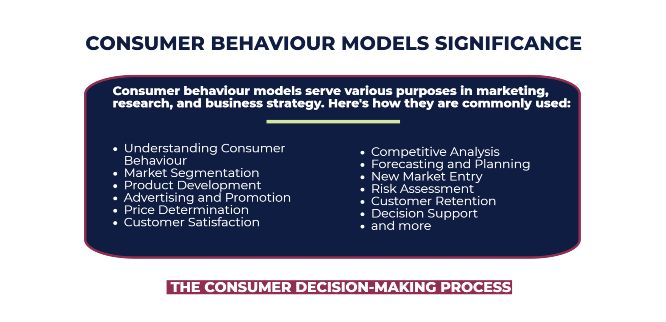
Consumer Behaviour Models Significance
Consumer behaviour models serve various purposes in marketing, research, and business strategy. Here’s how they are commonly used:
- Understanding Consumer Behaviour
- Market Segmentation
- Product Development
- Advertising and Promotion
- Price Determination
- Customer Satisfaction
- Competitive Analysis
- Forecasting and Planning
- New Market Entry
- Risk Assessment
- Customer Retention
- Decision Support
These are just a few areas where the study of consumer behaviour can help a business.
Economic Model
It is a model that describes the consumer as a completely rational being (rational consumer) who objectively judges and ranks each alternative product and chooses the one that gives them the greatest value. The model assumes that the consumer knows all brands of the product as well as their marginal utilities.
- Assumption: Consumers are rational decision-makers who seek to maximize utility or satisfaction while minimizing costs.
- Key Characteristics: Consumers carefully weigh the benefits and costs of each choice and make decisions based on a rational assessment of available information.
- Example: Economic models are often used in classical microeconomics to explain how consumers allocate their budgets among different goods and services.
An example:
Budgeting for a Vacation:
- Situation: A family plans a vacation to a popular tourist destination.
- Economic Model Behaviour: The family sets a budget for the trip, taking into account expenses such as transportation, accommodation, meals, and entertainment.
- Decision-Making Process: They prioritize activities and accommodations that offer the most satisfaction (utility) relative to their cost. They may make trade-offs, such as choosing a less expensive hotel to allocate more funds for activities they value more.
- Outcome: The family’s vacation spending aligns with their budget, reflecting a rational approach to maximizing enjoyment within their financial constraints.
In this example, consumers exhibit behaviours consistent with the economic model by actively seeking information, evaluating choices, and making decisions that aim to optimize their utility or satisfaction given their constraints. They consider costs and benefits when choosing products, planning expenditures, or making financial investments.
Passive Model
This model is a theory that sees man as a consumer who is a docile (compliant-obedient) recipient of marketing efforts and product promotions.
- Assumption: Consumers are passive and easily influenced by marketing and advertising.
- Key Characteristics: This model suggests that consumers don’t engage in extensive information processing and are heavily influenced by external cues, such as brand image and advertising.
- Example: In this model, consumers may make choices based on what is most prominently displayed in a store or what they’ve seen advertised recently.
An example:
Grocery Shopper:
- Situation: A consumer is at a grocery store to buy breakfast cereal.
- Passive Model Behaviour: The consumer approaches the cereal aisle without a specific brand or type in mind.
- Decision-Making Process: The consumer selects a cereal based on what is visually appealing or familiar to them without actively comparing ingredients, nutritional information, or prices.
- Outcome: The consumer chooses a cereal without extensive analysis or comparison shopping. They rely on visual cues or familiarity to make their selection and do not actively seek out the best value or nutritional option.
In this example, the consumer’s behaviour aligns with the passive model at the point of purchase. They make choices based on convenience, visual cues, or familiarity rather than engaging in an active decision-making process that involves comparing product attributes or prices.
Cognitive Model
Here the consumer is described as an active collector of information related to products of interest to them so that they are able to make satisfactory purchasing decisions.
- Assumption: Consumers are active information processors who engage in deliberate, systematic thinking when making decisions.
- Key Characteristics: This model emphasizes the role of cognitive processes like problem-solving, evaluation, and information search in consumer decision-making.
- Example: Cognitive models explore how consumers gather and process information, compare alternatives, and make choices based on cognitive assessments.
An example:
Smartphone Shopper:
- Situation: A consumer is in an electronics store looking to buy a new smartphone.
- Cognitive Model Behaviour: The consumer conducts thorough research before making a decision.
- Decision-Making Process: The consumer starts by identifying their specific needs, such as camera quality, processing power, and budget constraints. They gather information from online reviews, consult with friends or family, and visit multiple stores to compare options.
- Outcome: After extensive research and consideration, the consumer selects a smartphone that best aligns with their needs and preferences. They make an informed decision based on their research.
In this example, the consumer’s behaviour aligns with the cognitive model of consumer decision-making. They engage in a systematic and analytical process, considering various factors and conducting research to make an informed choice about the product that best meets their needs.
Emotional Model
This model sees the consumer making purchasing decisions based on subjective criteria, such as love, fear, pride, affection, etc., rather than based on objective criteria resulting from objective judgment.
- Assumption: Emotions play a central role in consumer decision-making.
- Key Characteristics: This model suggests that consumers’ emotions and affective states heavily influence their choices. Emotions can override rational decision-making in some cases.
- Example: Emotional models examine how feelings like joy, fear, or desire can impact consumer choices, particularly in branding and advertising strategies.
An example:
Luxury Car Buyer:
- Situation: A consumer is considering buying a luxury car.
- Emotional Model Behaviour: The consumer’s decision is primarily influenced by emotional factors.
- Decision-Making Process: The consumer is drawn to the prestige, status, and emotional appeal associated with luxury cars. They visit dealerships, test drive several models, and are captivated by the sleek design, advanced technology, and the feeling of opulence.
- Outcome: The emotional connection and desire for luxury lead the consumer to choose a high-end luxury car, even if it means stretching their budget. The sense of satisfaction and status associated with the purchase is a significant driver of their decision.
In this example, the consumer’s behaviour aligns with the emotional model of consumer decision-making. Their choice is driven by emotions, including the desire for luxury, prestige, and the emotional satisfaction derived from owning a high-end product. These emotional factors play a central role in their decision-making process.
Behavioural Economics Model
This model examines consumers who are guided by the principles of behavioural economics and might make purchasing decisions influenced by various psychological biases and heuristics.
- Assumption: Consumers often deviate from rational behaviour due to cognitive biases and heuristics.
- Key Characteristics: This model combines elements of psychology and economics to study how individuals make decisions. It explores the systematic ways in which people depart from traditional economic models.
- Example: Behavioural economics considers phenomena like loss aversion, anchoring, and status quo bias, which can lead to decisions that appear irrational from a purely economic perspective.
An example: Let’s consider the concept of “anchoring bias.” This bias occurs when a consumer relies heavily on the first piece of information encountered when making decisions, even if it’s arbitrary or irrelevant. In this case:
Smartphone Shopper:
- Scenario: Imagine a consumer is shopping for a new smartphone. They walk into an electronics store and immediately notice a prominently displayed smartphone with a “sale” sign showing its original price as $1,000 and the sale price as $699. This is the first smartphone they encounter in the store.
- Consumer’s Thought Process: The consumer may anchor their perception of the smartphone’s value to that initial price of $1,000. This high anchor sets a reference point in their mind. As a result, the sale price of $699 seems like a significant discount, even if they hadn’t planned to spend that much on a phone.
- Purchase Decision: Influenced by the anchoring bias, the consumer is more likely to purchase this particular smartphone because they perceive it as a great deal compared to the high anchor price. They may not explore other smartphone options thoroughly because they’re anchored to the $1,000 reference point.
In this example, the behavioural economics model consumer’s decision is influenced by the anchoring bias, a psychological heuristic. They might make a purchase that they otherwise wouldn’t have made if the initial anchor price had been different.
Behavioural economics explores how individuals deviate from purely rational decision-making, considering psychological and emotional factors that influence choices.
The Disadvantages of Consumer Behaviour Models
In general, the disadvantages of consumer behaviour models are summarized as follows:
- Include Only Common Elements
- Variability in Element Importance
- Varied Importance for Different Uses
- Applicability Across Consumers
- Varying Decision Complexity
From my own experience as a consumer; I purchase specific products like clothing instantly based only on emotional factors, but I also decide on other products based on a step-by-step evaluation process, i.e. for more expensive products like taking a vacation, buying a computer, etc. For other products like food, I base my decision on past experiences and my overall education about healthy nutrition that is constantly evolves.
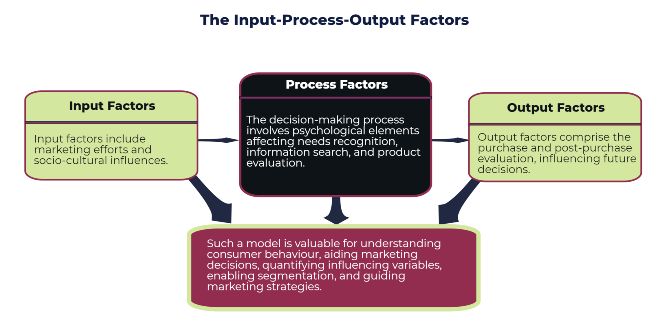
The Input-Process-Output Factors
There is a need for a simplified consumer decision-making model that encompasses input, process, and output factors.
Input factors include marketing efforts and socio-cultural influences.
The decision-making process involves psychological elements affecting needs recognition, information search, and product evaluation.
Output factors comprise the purchase and post-purchase evaluation, influencing future decisions.
Such a model is valuable for understanding consumer behaviour, aiding marketing decisions, quantifying influencing variables, enabling segmentation, and guiding marketing strategies.
In essence, a consumer behaviour model proves beneficial when it::
- Fosters a comprehensive and interconnected perspective of consumer behaviour, facilitating segmentation and linking consumer thoughts to decisions.
2. Aids in identifying the requisite information for informed marketing decisions.
3. Encourages the quantification of the various factors and variables influencing consumer decisions.
4. Provides a foundation for effective market segmentation.
5. Serves as a basis for the development of well-informed marketing strategies.
The General Model of the Consumer’s Purchasing Behaviour
The consumer decides on the purchase of a product by responding to various stimuli they receive. These stimuli are processed by the consumer’s mind, which is characterized as a “black box” precisely because the processes that take place inside it are not clear (figure A).
The consumer behaviour researcher can only roughly determine the process that a particular consumer followed in arriving at the decision (response) to purchase the product. The response is obvious, but not exactly what preceded it.
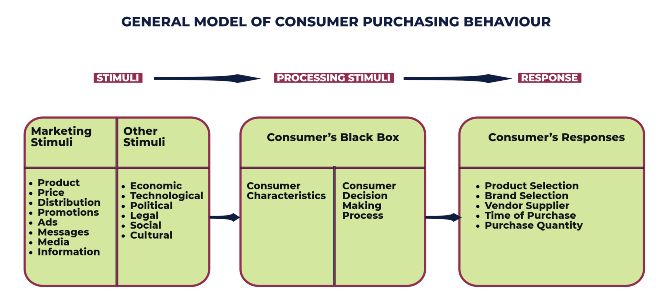
Figure B below shows a more specific form of the first figure describing what factors mediate before, during, and after making a decision to purchase products.
It is important to understand the importance of the post-purchase behaviour of the consumer since the role of marketing should not stop with the purchase of the product. Marketing efforts should be aimed at high repeat purchases.
Consumers evaluate the product after each purchase and use, and the results of these evaluations continuously feed into the consumer experience around the product. This experience is part of the whole decision-making process.
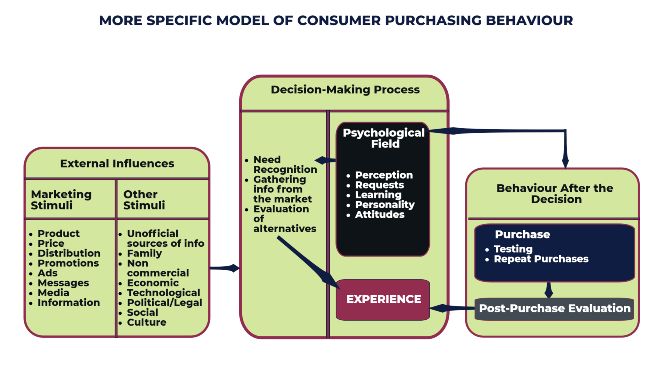
Need Arousal
To induce consumer needs, specific conditions must be met. Consumers enter the decision-making process with a psychological set and various internal and external inputs. This set contains subjective criteria that shape their brand attitudes.
Before taking action (like making a purchase), consumers gather information
and evaluate brands. Their psychological set evolves with new experiences and knowledge.
However, the trigger for recognizing a need is exposure to stimuli from the environment, such as advertising.
The connection between exposure and need recognition happens during tense situations, pushing consumers to seek information. Need recognition initiates the decision-making process, influenced by marketing or internal stimuli, like disappointment or physiological needs.
Information Processing and Brand Evaluation
To make a decision and evaluate brands, consumers gather and process information, considering their criteria for need satisfaction with the right brand. Recognizing the need requires exposure to stimuli that gain attention, are understood in line with existing beliefs, and are retained in memory, especially if relevant to the consumer’s needs.
A relevant message can change the criteria for need satisfaction, potentially altering
attitudes toward other brands. These changes influence the consumer’s future needs, their prioritization, and the specific evaluation of each brand using decision rules.
This process ultimately leads to the consumer’s expected satisfaction with each alternative brand based on the need association.
Searching and Processing Information for Decision-Making
The quantity and quality of information consumers use to decide on products significantly impact their choices. Although more information is often assumed better, research by Keller and Staelin in 1987 suggests that too much information can lead to suboptimal decisions. They argue that quality enhances decision-making while quantity hinders it, especially with an excess of high-quality information.
Consumer confidence in choices is influenced by the quality, quantity, and recentness of information, according to the same study. The information environment affects how consumers process information, impacting decision effectiveness.
The presentation of product information also matters. Levin and Gaeth in 1988 conducted an experiment using minced meat and found that how information was framed influenced consumer perceptions. Personal experience moderates this effect; when consumers have personal experience with a product, they are less influenced by information presentation.
They presented minced meat as
- a) “75% fat-free”, or
- b) “with 25% fat”.
Consumers were more positive about the “75% fat-free” minced meat.
The order in which information is received plays a role in decision-making. The averaging model of information integration suggests that the first information source holds more weight. Levin and Gaeth’s experiment supported this notion.
Time availability affects information gathering. Hauser, Urban, and Weinberg in 1993 found that time constraints limit the quality and quantity of information consumers gather.
Consumer age influences information seeking. Cole and Balasubramanian in 1993 showed that younger consumers are more likely to seek information and make accurate choices based on nutritional information, especially when they can write down gathered data.
Involvement, the interaction of individual and task, affects information search (Punj and Stewart, 1983). Beatty and Smith in 1987 found positive relationships between information-seeking and consumer market involvement, attitude toward shopping, and time availability. However, consumer knowledge about a specific product category was negatively related to information search.
The findings of this study contradict those of the Moorman study in 1990, which argued that age is positively correlated with an individual’s ability to process and use nutritional information.
Gender differences exist in information processing. Meyers-Levy and Maheswaran in 1991 found that women focus on details in advertising messages, while men rely on the overall message. However, these differences can disappear under certain conditions.
Stigler’s theory (1961) posited that consumers seek satisfactory information for optimal product purchases, but Avery (1993) showed it applies better to information searches outside the store. Avery (1996) applied Stigler’s (1961) Economics of Information Theory to consumer search for grocery items, considering cost-benefit factors. Pre-store and in-store information searches are separate but complementary stages in food shopping.
Overall, various factors, including information quantity, quality, presentation, personal experience, time availability, age, involvement, and gender, influence how consumers search for and process information when making decisions.
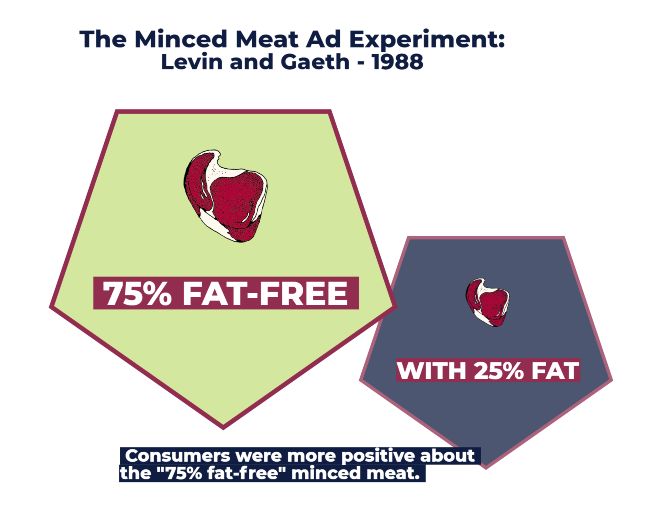
Extended Decision-Making
Extended decision-making is a consumer approach where they meticulously evaluate multiple product brands, actively gathering extensive information. This method is typically employed for products that are expensive, have a long life cycle, pose high investment risk, are technologically advanced, require significant consumer involvement and demand active information gathering. Examples include cars, apartments, and stocks.
From a marketing perspective, when the target market predominantly uses extended decision-making, it is crucial for marketers to understand how consumers gather and assess information. It’s important to educate consumers about the key criteria where their brand excels compared to competitors. Informative advertising and comparative advertising play significant roles in facilitating this information-gathering process for potential customers.
| General Decision-Making | Extended Decision-Making |
| #1 Problem Identification | #1 Need Recognition |
| #2 Information Collection | #2 Information Processing |
| #3 Evaluation of Alternatives | #3 Brand Comparison |
| #4 Selection | #4 Purchase of Selected Brand |
| #5 Result | #5 Post-Purchase Brand Evaluation |
Limited Decision-Making
Limited decision-making is a consumer approach applied to products bought at intervals more regularly than those in extended decision-making but still not very frequently. It also comes into play when consumers encounter a new brand of a familiar product and want to assess how it differs from their existing choices. In such cases, consumers seek information about the new brand to make comparisons and decide whether to adopt it.
Consumers engage in limited information processing by seeking information through inquiries, noticing advertisements, and similar actions. For instance, a tennis player familiar with racket brands might become interested in a friend using a new brand, prompting them to learn more about it through limited decision-making.
From a marketing standpoint, it’s essential to recognize that consumers use limited decision-making to mitigate the risk of purchasing a product. In response, marketers should create awareness programs that help consumers understand the new brand’s features, benefits, and distinctions from competitors. This approach builds consumer confidence in the new product.
Mechanical or Automatic Decision-Making (by habit)
Mechanical or automatic decision-making, driven by habit, is the simplest consumer decision-making process. It involves quick decisions without much mental effort. This process is applied to products that are not considered very important, are relatively cheap, and are used frequently.
Examples include daily bread from the same bakery, routine vegetable purchases, or consistently using a neighbourhood gas station for refuelling. Marketing’s role here is to maintain consistent product quality and associated services to satisfy existing consumers systematically. Additionally, marketing aims to attract new buyers by encouraging them to break the habit of purchasing competing brands through the introduction of new features, special prices, promotions, and so on.
Inhabitual decision-making and information-seeking are limited, and alternative evaluation is minimal. This habit-based decision-making offers two key advantages: a) reducing the risk of product failure and financial loss, and b) simplifying the decision-making process by saving time and energy compared to more complex decision-making approaches.
As habit becomes the foundation for decision-making, consumers reduce their information-seeking efforts. They primarily focus on specific brand information and give more weight to product price and availability while placing less emphasis on product-related information.
Decision-Making Rules
Decision-making rules vary in consumer behaviour, with consumers using distinct strategies based on product characteristics and personal preferences. These rules dictate how consumers gather and process information to arrive at their final choices. Here are some key aspects of decision-making rules:
Limited Information Gathering: Consumers typically search only a subset of available product brands during the selection process. They may not be aware of all brands and focus on those they consider acceptable (evoked set) while ignoring others (inert set). Some brands may even be considered unacceptable and avoided.
Variability in Information Gathering: Depending on the consumer’s decision-making process, the search for information can range from limited to extensive. The amount of information collected varies among consumers and product categories, and the order in which information is sought depends on the consumer’s priorities and product characteristics.
Multiple Criteria Evaluation: Consumers evaluate brands based on multiple criteria, such as price, taste, calories, and other attributes. These criteria vary in importance for different consumers and can influence their final decisions.
Order of Information Gathering: Consumers may ask for information in a specific order, based on their priorities. For example, a consumer may start by gathering information on calorie content, then taste, and so on, based on their preferences.
Sequential Information Gathering: Some consumers gather all the necessary facts about each brand before making a decision. They systematically collect information on all attributes of each brand they are considering.
Variability in Decision Speed: Decision speed can vary among consumers. Some individuals may make quick decisions by evaluating only one or two product features, while others may take more time and gather information on multiple attributes.
Impact of Purchase Quantity: The quantity of the product purchased can also influence brand choice. For instance, consumers buying multiple units of a product in a single purchase occasion may be more inclined to choose different brands or flavours, particularly if they usually don’t vary their choices in separate shopping events.
Influence of Brand Arrangement: The way brands are displayed on store shelves can also affect consumer choices. Familiar brands are more likely to be chosen when buying larger quantities, possibly due to the combined effect of purchase quantity and brand arrangement.
In essence, consumers employ diverse decision-making rules and strategies when choosing among product brands, and these rules can be influenced by various factors, including product characteristics, personal preferences, and purchase quantity. Understanding these rules is crucial for marketers seeking to influence consumer choices effectively.
Next, I will present various rules that can be used by the consumer to gather information on various brands and finally choose one of them.
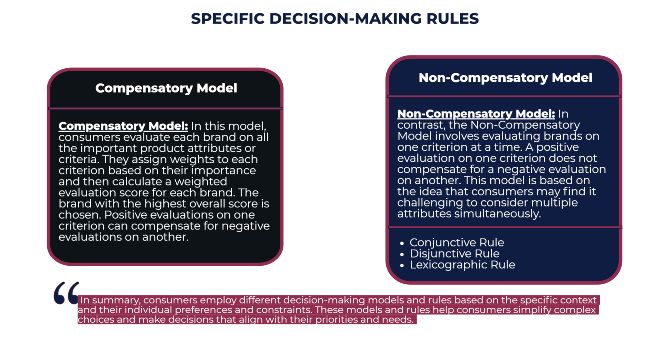
Specific Decision-Making Rules
Consumer decision-making can be categorized into two basic models: the “Compensatory Model” and the “Non-Compensatory Model.” These models are used depending on the situation, and they involve different approaches to evaluating and selecting brands.
Compensatory Model: In this model, consumers evaluate each brand on all the important product attributes or criteria. They assign weights to each criterion based on their importance and then calculate a weighted evaluation score for each brand. The brand with the highest overall score is chosen. Positive evaluations on one criterion can compensate for negative evaluations on another.
Non-Compensatory Model: In contrast, the Non-Compensatory Model involves evaluating brands on one criterion at a time. A positive evaluation on one criterion does not compensate for a negative evaluation on another. This model is based on the idea that consumers may find it challenging to consider multiple attributes simultaneously.
The Non-Compensatory Model can be implemented using three decision rules:
- Conjunctive Rule: Consumers set a minimum threshold for each attribute. Brands that fall below this threshold for any criterion are eliminated from consideration.
- Disjunctive Rule: Consumers set a minimum threshold for each attribute. Any brand that meets or exceeds the threshold for any criterion is considered acceptable.
- Lexicographic Rule: Consumers rank product attributes based on importance and then compare brands based on the most important attribute. If a brand performs well on the most important attribute, it is chosen. If not, the evaluation continues with the second most important attribute, and so on. If two brands have equal evaluations on the most important attribute, the one with the better evaluation on the second most important attribute is chosen.
The choice between compensatory and non-compensatory models depends on various factors, including time constraints, available information, the cost of acquiring information, consumer involvement with the product, brand loyalty, product importance, prior experience with the product, purchase habits, and product usage frequency.
In summary, consumers employ different decision-making models and rules based on the specific context and their individual preferences and constraints. These models and rules help consumers simplify complex choices and make decisions that align with their priorities and needs.
Complete Example of Applying Decision Rules
The following example is based on Hawkins, Best, and Coney (1992).
The consumer rates the products on a scale from 1 to 5, where 5 is the highest value. Each product feature has a different significance.
| Significance | Criteria/Product Features | AST | COMPAQ | HP | MACINTOSH | IBM | TOSHIBA |
| 30 | Price | 5 | 3 | 3 | 4 | 2 | 1 |
| 25 | Quality | 3 | 4 | 5 | 4 | 3 | 4 |
| 20 | Ease of use | 3 | 3 | 3 | 5 | 3 | 3 |
| 10 | Software | 5 | 5 | 5 | 2 | 5 | 5 |
| 10 | After purchase support | 3 | 3 | 4 | 3 | 5 | 3 |
| 05 | Ease of transportation | 1 | 3 | 1 | 3 | 1 | 5 |
NOTE: I solve this problem in the book (see below).
Implications for Marketing Strategy
The consumer’s decision-making process has significant implications for marketing strategy, as it directly influences how brands and businesses approach advertising, product development, packaging, the overall process of consumer persuasion, and customer engagement.
In particular, if we know the order in which consumers of a group gather and process information about different brands toward end up buying one of them, it is easier to present our brand elements (attributes, content, etc.) on the packaging in the same
order, thus facilitating the processing of information by consumers.
Our brand advertising can also take the form of comparative advertising. In comparative advertising, the way we present the elements of the competing brands to be compared prompts consumers – receivers of the message to process the information in a certain way (whether compensatory or not). Mainly in comparative advertising the “Compensatory Model” is used in the presentation of the comparative data.
However, in this case, it’s important to be cautious when directly comparing our product to others, as this can lead to legal or ethical issues.
Plus, we can utilise Informational advertising that focuses on providing in-depth information about the product’s features, benefits, and uses. This can be especially effective when consumers are in the information-gathering phase of their decision-making process. By presenting clear and relevant information, we can help consumers make well-informed choices.
Recent Trends
- E-commerce Boom During COVID-19
- Sustainability and Eco-consciousness
- Influence of Online Reviews and Social Media
- Personalization and Data Privacy
- Mobile Shopping and App Usage
- Subscription Services
- Conscious Consumerism
- Voice Commerce and Smart Devices
- Contactless Payments
- Augmented Reality (AR) and Virtual Reality (VR)
These recent trends highlight the dynamic nature of consumer behaviour and the evolving landscape in which businesses operate. We should evaluate these trends before we develop strategies for our business.
Actionable Takeaways for Marketers and Business Owners
I share those takeaways in the book (see below).
Conclusion: Unlocking Consumer’s Mind
In the dynamic world of consumer behaviour, understanding the intricate processes that drive decisions is the key to success for businesses and marketers.
We’ve embarked on a journey through the various models, factors, and influences that shape how consumers choose what to buy, when, and why.
This article, although extensive, only scratches the surface of this fascinating realm.
For those eager to explore further, I invite you to read my comprehensive eBook entitled “The Consumer Decision-Making Journey: Unveiling the Process”, which delves deeper into each aspect we’ve touched upon. Inside, you’ll find additional examples, case studies, infographics, interactive sections, exercises, and actionable insights that can transform your approach to consumer engagement.
In addition, I share a handy framework for decision-making and an experiment that you can apply to many of your purchasing decisions in a variety of situations and dilemmas in real life.
Let me remind you that the consumer behaviour journey doesn’t end here… in fact, we’ve just got started – there’s so much more – this is just the decision-making process. So, be on the lookout for my upcoming releases, you’ll love it.
The world of consumer decision-making is ever-evolving, and as it does, so should your approach to understanding it.
Thank you for joining me in this exploration, next download the eBook to dive deeper into the beautiful world of consumer behaviour, and I look forward to your feedback.
The Book: The Consumer Decision-Making Journey
Why should you read this book right away? 40 reasons.
What’s EXTRA in the 232-page book:
- A deeper analysis of the introduction to consumer behaviour (see previous article).
- Analysis of the factors that influence consumer behaviour.
- Analysis of the consumer decision-making process overview.
- Analysis of the consumer behaviour models’ significance.
- One (1) more example of the economic model: investing in a retirement account.
- One (1) more example of the passive model: television viewer.
- One (1) more example of the cognitive model: enrolling in a training program.
- I go deeper into the luxury car buyer example.
- One (1) more example of the emotional model: fancy jacket buyer.
- One (1) more example of the behavioural economics model: expensive online fitness membership.
- The “Choose Your Own Purchasing Path” example: In this scenario, you are the consumer, the protagonist. An interactive section where I guide you through the various options and help you reflect on your decisions. There’s also a practical section entitled “Applying what you’ve learned”.
- The experiment “Real-Life Buying Scenario”: We put theory into practice and actually apply the knowledge of consumer behaviour models in a real-life buying scenario. I help you with guiding questions. This approach can be replicated in a wide range of purchasing situations.
- The “SmartChoice” framework. I created a framework to guide consumers through their buying decisions. It’s a structured framework that you can use for complex purchasing decisions and can help you analyse your decision-making processes and the outcomes, and last but not least, become a more conscious, mindful, and strategic consumer yourself.
- A comparison between 3 consumer behaviour models: Emotional vs. Economic vs. Cognitive Model.
- I go deeper into the disadvantages of consumer behaviour models.
- I go deeper into the input-process-output factors.
- I go deeper into the need arousal concept.
- I share another infographic explaining the need arousal concept.
- I go deeper into information processing and brand evaluation.
- I share another infographic illustrating information processing and brand evaluation.
- I go deeper into searching and processing information for decision-making.
- I give you a handy recap (in bullet points) of searching and processing information for decision-making.
- I share another infographic regarding mechanical or automatic decision-making (by habit).
- Another comparison: automatic (by habit) vs. extended decision-making.
- An infographic illustrating the above comparison.
- I go deeper into decision-making rules.
- I share another infographic regarding decision-making rules: the subset of alternative brands.
- I share an example: breakfast cereal to analyze the possible rules that the consumer uses when gathering and processing information in the decision-making process.
- I share an experiment conducted by Simonson and Winer in 1992, where they used yoghurt sales scanner data and hypothesized that as the number of purchase units in the same given purchase occasion increases…
- I go deeper into specific decision-making rules and I share what Russo and Dasher showed regarding consumers having difficulty considering two product attributes at the same time.
- I also share the factors on which the outcome of the processes described depends (bullet points).
- I share an example of applying decision rules: four (4) consumers evaluate an apartment downtown using different decision-making approaches: the compensatory model, conjunctive rule, disjunctive rule, and lexicographic rule (non-compensatory model).
- I solve the complete example of applying decision rules by Hawkins, Best, and Coney (1992) where a consumer rates the products (personal computers) on a scale from 1 to 5, where 5 is the highest value and each product feature has a different significance.
- I help you solve the problem with a video walkthrough step-by-step as well.
- I assign an exercise of applying decision rules for you to practice and get familiar with the concept and the different decision-making approaches. It’s about buying a set of noise-cancelling headphones. I use tables filled only with critical information leaving you space to fill in the blanks on your own. I ask some questions to help you in solving it and there’s a ‘SURPRISE’ if you solve it and share your answers with me. There’s a slight difference with the previous example that I solved.
I added online reviews as a medium to gather data regarding the criteria. - I go deeper into the implications for marketing strategy and I give you a thorough description of these implications.
- I go deeper into the recent trends – I explain them thoroughly.
- I share key actionable takeaways – what you can do effectively today to improve all your business operations and marketing activities.
- There’s another EXTRA section – another SURPRISE.
- An epilogue.
Table of Contents
Prologue
Introduction
- Definition
Phase 1: The Study of Consumer Behaviour
- Questions of the Study of Consumer Behaviour
- Factors that Contributed to the Development of the Study of Consumer Behaviour
PHASE 2: Consumer Behaviour is Interdisciplinary
- The 6 Sciences
- The 6 Sciences Analysed
PHASE 3: The Study of Consumer Behaviour is Absolutely Essential
- Consumer Behaviour and the Consumer
- Consumer Behaviour and Marketing Strategy
- Consumer Behaviour and Public Policy
PHASE 4: A Simple Model of Consumer Behaviour
PHASE 5: Consumer Behaviour Introduction Resume
- Importance for Business Owners
- The Demanding Role of a Business Owner
- Importance of Market Research
- Importance of a Target Market
Introduction Recap
PHASE 6: The Decision-Making Consumer
- Factors that Influence Consumer Behaviour
PHASE 7: Statistics
PHASE 8: Consumer Decision-Making Process Overview
PHASE 9: Consumer Behaviour Models and Their Significance
- The Economic Model
- The Economic Model – Example #1
- The Economic Model – Example #2
- The Passive Model
- The Passive Model – Example #1
- The Passive Model – Example #2
- The Cognitive Model
- The Cognitive Model – Example #1
- The Cognitive Model – Example #2
- The Emotional Model
- The Emotional Model – Example #1
- The Emotional Model – Example #2
- The Behavioural Economics Model
- The Behavioural Economics Model – Example #1
- The Behavioural Economics Model – Example #2
- Choose Your Own Purchasing Path – Example
- Real-Life Buying Scenario: An Experiment
- The SmartChoice Framework
- Emotional vs. Economic vs. Cognitive Model
PHASE 10: The Disadvantages of Consumer Behaviour Models
PHASE 11: The Input-Process-Output Factors
PHASE 12: The General Model of the Consumer’s Purchasing Behaviour
- More Specific Model of Consumer Purchasing Behaviour
PHASE 13: Need Arousal
PHASE 14: Information Processing and Brand Evaluation
- Searching and Processing Information for Decision-Making
- Extended Decision-Making
- Limited Decision-Making
- Mechanical or Automatic Decision-Making (by habit)
- Automatic (by habit) vs. Extended Decision-Making
- PHASE 15: Decision-Making Rules
- An Example (Breakfast Cereal)
- Yoghurt Scanner Sales Data
- Specific Decision-Making Rules
- Example of Applying Decision Rules #1
- Complete Example of Applying Decision Rules #2
- Exercise of Applying Decision Rules #1
PHASE 16: Implications for Marketing Strategy
PHASE 17: Recent Trends
PHASE 18: Actionable Takeaways
EXTRA
Epilogue

Tasos Perte Tzortzis
Business Organisation & Administration, Marketing Consultant, Creator of the "7 Ideals" Methodology
Although doing traditional business offline since 1992, I fell in love with online marketing in late 2014 and have helped hundreds of brands sell more of their products and services. Founder of WebMarketSupport, Muvimag, Summer Dream.
Reading, arts, science, chess, coffee, tea, swimming, Audi, and family comes first.
HOT
- The Coin Show Business EXPERIENCE: Master the art of organising, marketing, and profiting from coin shows. Numismatics Guide.
- PaidTrafficPlaybook: Shortcut To Selling Digital Content Fast. Ready-Made Paid Ads "Business In A Box" With Full Private Label Rights.
- DatabaseMart: End-to-end IaaS services, seamless cloud computing experience, competitive VPS, dedicated, and GPU servers for small businesses.
- Meshy: The world’s most popular and intuitive free AI 3D model generator. Transform text and images into stunning 3D models in seconds.
- AliExpress: Global eCommerce connecting small businesses and manufacturers with international buyers. Vast range of products at competitive prices.
- RedMagic: Gaming reimagined. Gaming smartphones, tablets, pc gaming, gaming products and accessories.
- MrKeyShop: Top brand software, original and guaranteed, at great prices.
- WorldBusinessesForSale: Global marketplace for buying and selling businesses.
- DealFuel: One-stop shop for cool tech deals for web designers, developers, businesses, marketers, bloggers & freelancers.
- WP-Rocket: All-in-one web performance plugin for WordPress.
- Zoviz: AI-powered online branding solutions.
- Pigment: Find work that fits who you are. Career self-discovery platform.
- Optery: Remove your home address, phone and other private info from Google, and 1,360+ sites.
- *Business-Related Statistics Ultra Collection: A new catalog on WMS. Constant updates.
KNOWLEDGE ECONOMY SUCCESS BLUEPRINT
- Theory Hub: Jan 16, new subsection in the section “Info-Products” – Packaging and Pricing”.
- Workshop #13: Exclusive for members. Packaging and pricing for the 1st info-product in the numismatic industry. Delivered in the members’ area.
Signup for the exclusive workshops. Hidden perks inside the member’s area.
Upcoming:
- WORKSHOP #14: The Value-Led Revelation Launch.
- Live Challenge
STAY TUNED!
TOP CONTRIBUTORS
We honoured the 11 first names. Something is coming your way soon!
- Natasha Lane
- Amanda Jerelyn
- Evelina Brown
- Bailey Belmont
- Gregory V. Chapman
- Harris A. Norman (first contributor ever) Double reward!
- Beatrix Potter
- Myrah Abrar
- Arthur Rowley
- Regina Thomas
- Samantha Higgins
Please vote on what this reward will be. Are you one of the awardees? You can vote too!
TOP QUOTES
“When the government violates the people’s rights, insurrection is, for the people and for each portion of the people, the most sacred of the rights and the most indispensable of duties.” – Marquis De Lafayette.
7 IDEALS METHODOLOGY DOCUMENTARY
I’m filming the last part. The finish line. New office setup. Outdoor footage needed 🙂
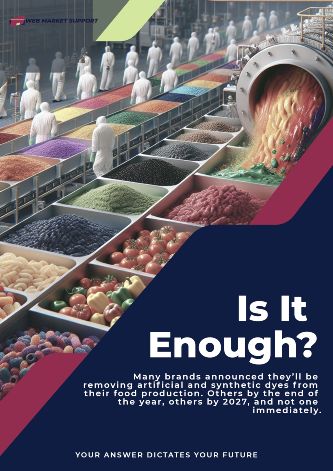
A REVOLUTIONARY WAY of doing business in the "AFFILIATE INDUSTRY"
🚀 Affiliate Advantage Alliance: Master successful affiliate promotions with an affordable subscription and together, let’s change the affiliate industry that is suffering right now (for aspiring entrepreneurs and brands that want to hire affiliates).
Stay tuned!
Business Growth Hub
Free Membership: Exclusive Content & Services
Get access to business training, marketing and sales secrets, personal stories from the entrepreneurial world, downloads, eBooks, exclusive content and services, and the newsletter to scale your business.
Business Growth Hub
As a valued member, you’re also entitled to a complimentary “Business Audit” bundled with a custom video report and a 60-minute 1-on-1 consulting session – your first step to clarity and growth.
Read More
Latest Posts
Βιομηχανία Τροφίμων και Ποτών | Ένας Κόσμος Δηλητήριο
Λεπτομερής ανάλυση του κλάδου τροφίμων και ποτών με ευρήματα πολυετούς, εις βάθος έρευνας. Κάποια στοιχεία ή παραδείγματα μπορεί να σοκάρουν όμως η άποψή σας είναι πολύ σημαντική.
Knowledge Economy: Workshop #13 Packaging & Pricing
I explain how exactly I packaged and priced the latest information product, the “Coin Show Business Experience” Level 1. An exclusive workshop for subscribers.
Marketplace: Opening Celebration
A great day to celebrate the opening of the marketplace. The next step in my entrepreneurial journey. Education, consulting, tools and resources focused on innovation. Create an account and stay tuned for updates.
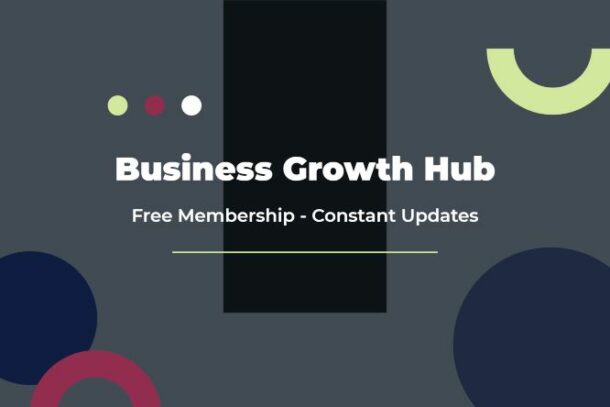
Business Growth Hub
Business Organisation & Administration Excellence
+ EXCLUSIVE Content, Workshops, and Services
UNLOCK YOUR FULL POTENTIAL


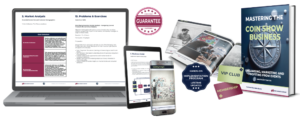
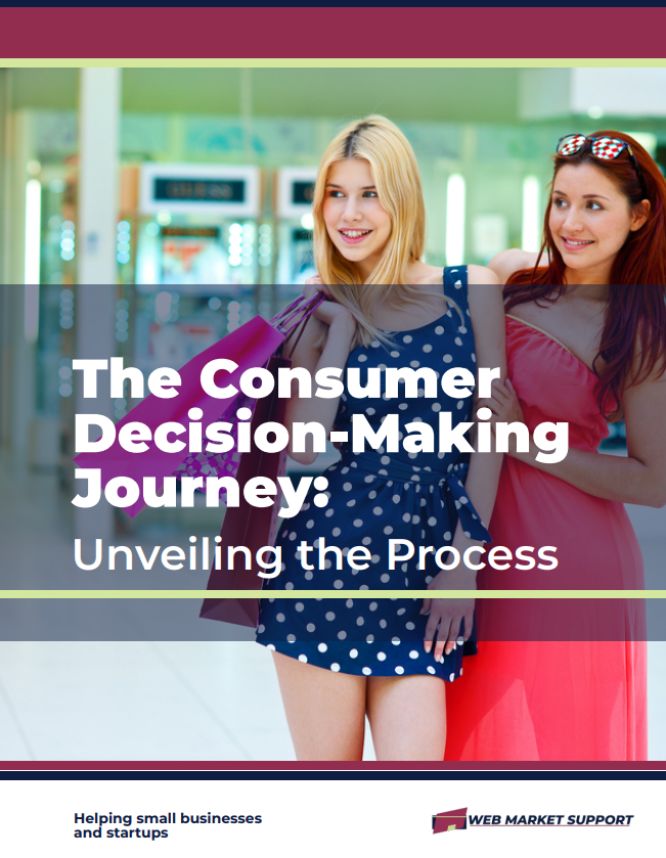




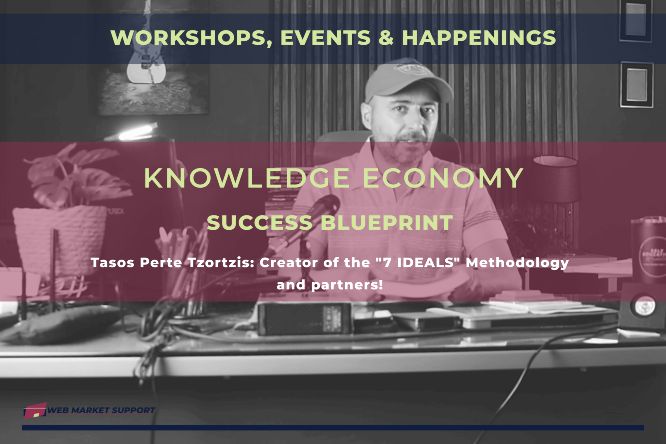
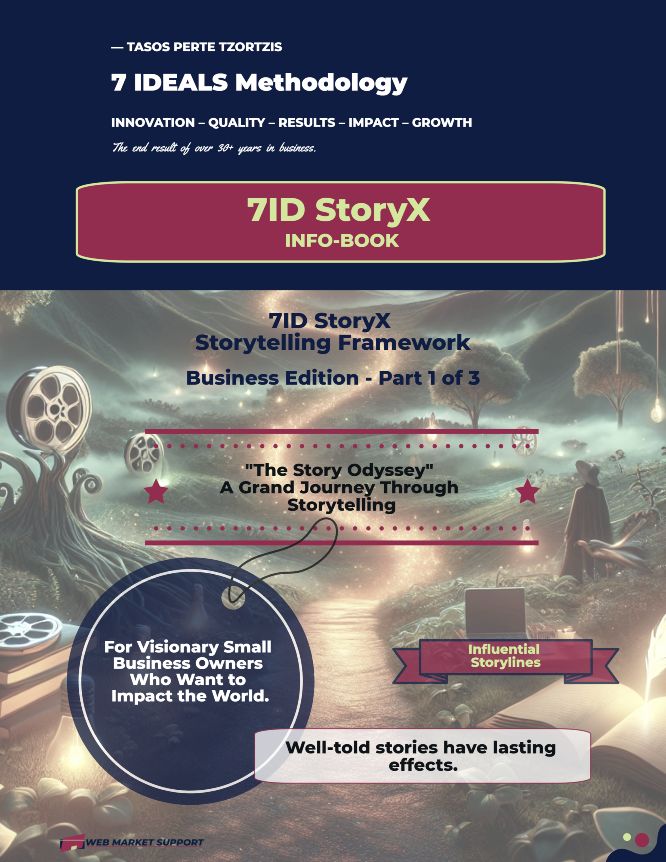
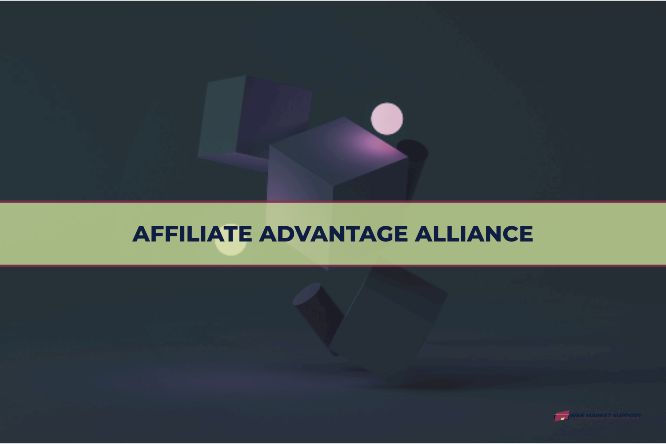


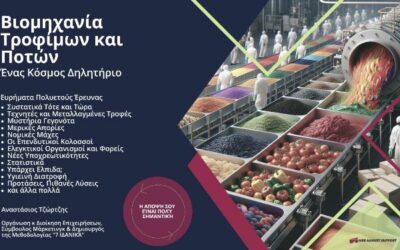
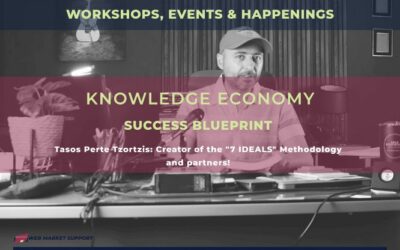

0 Comments